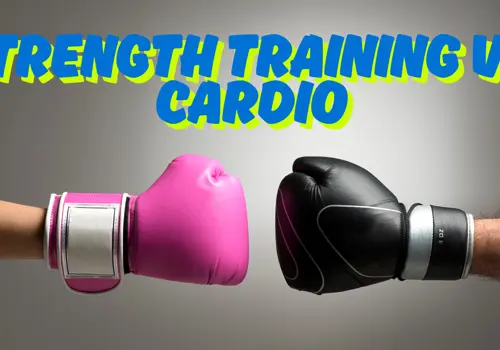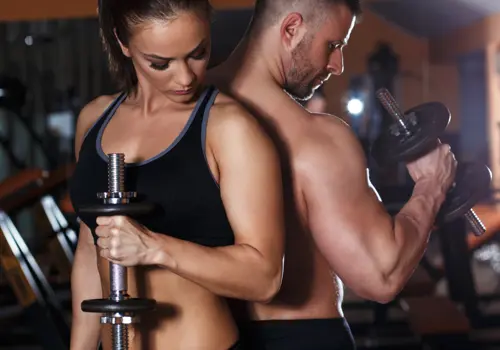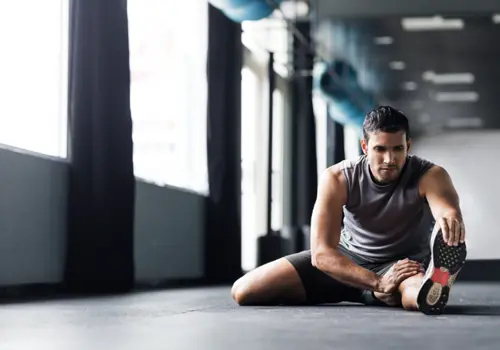Exercises/Workouts • Mar 10, 2025
Effective Workouts for Soccer Players at Home
Soccer is a beloved sport, boasting millions of players and fans worldwide. Whether you play on a professional level or view it as a favorite pastime, you’re probably aware of the sheer effort and practice it takes to develop and maintain proper skills.
To become a successful soccer player, you need a unique combination of speed, endurance, agility, and strength. While on-field practice is essential, home training also plays a crucial role in enhancing performance. Dedicating a regular portion of time to at-home practice helps you build power, improve stamina, increase flexibility, and gain a competitive edge over opponents.
Additionally, at-home personal training allows soccer players to focus on specific fitness components that may not always be emphasized in team practices. Structured workouts help athletes develop better control over their movements, improve overall conditioning, and reduce injury risk.
Whether you’re a professional soccer player or someone who enjoys a game on the weekend, this guide will help you establish a powerful home workout routine.
Let’s get the ball rolling!
How Can a Home Workout Routine Help You Become a Better Soccer Player?
Even people who’ve only played a few games know that soccer is one of the most physically demanding sports. It requires players to sprint, jump, pivot, and endure long days on the field.
While training with a team is necessary for skill development, individual training sessions at home can supplement those workouts and address personal areas of improvement. A well-rounded at-home training plan should incorporate strength, endurance, agility, and flexibility exercises to ensure complete athletic development.
That said, let’s explore some of the key benefits of developing a home workout program.
Strength Training for Soccer Players
Strength training is essential for soccer players, as it enhances power, improves balance, and prevents injuries. Lower body strength is crucial for movements like sprinting, kicking, and jumping, while core strength supports stability and control during rapid direction changes. Upper body strength also contributes to overall athleticism, helping players hold their ground in physical encounters on the field.
To increase strength, you can incorporate resistance-based exercises such as Bulgarian split squats, resistance band leg extensions, and weighted step-ups. These movements mimic the functional strength needed during play, helping you develop power and endurance while maintaining flexibility.
Endurance and Conditioning Workouts
As mentioned above, soccer is an endurance-heavy sport that requires players to maintain high energy levels throughout the match.
Developing cardiovascular endurance through high-intensity interval training (HIIT) and steady-state aerobic exercises helps players improve their stamina and recover faster between games. Proper conditioning ensures athletes maintain peak performance levels throughout the game instead of quickly burning out.
Long-distance running, sprint interval training, and hill sprints are excellent for building stamina. Combining endurance workouts with explosive movements, such as jump squats and broad jumps, allows you to develop the sustained energy needed to maintain a high level of performance from kickoff to the final whistle.
Speed and Agility Drills
Quick footwork and agility are fundamental to soccer performance. Players must accelerate, decelerate, and change direction swiftly to outmaneuver opponents.
At-home agility drills, such as cone exercises, ladder drills, and plyometrics, enhance reaction times and foot speed, giving you the upper hand in one-on-one situations.
Side shuffle drills, quick-step drills, and depth jumps further refine your ability to change direction with control. These movements also improve coordination and balance, which are essential for responding effectively to game situations.
Flexibility and Mobility Workouts
Flexibility and mobility are often overlooked. However, these skills are essential for injury prevention and fluid movement on the field.
Dynamic stretching before workouts and static stretching after training can help improve the range of motion. Hip and ankle mobility drills are especially important for soccer players, as they enhance footwork, balance, and control when dribbling or striking the ball.
Daily exercises for flexibility, such as deep lunges, pigeon pose, and hamstring stretches, further prevent injury. Mobility drills using resistance bands can also improve joint stability, ensuring that movements remain smooth and efficient during gameplay.
At-Home Workout Ideas for Soccer Players
As a soccer player, you need a well-rounded training routine that targets different aspects of athleticism. Even if you’re getting plenty of practice on the field, additional training allows you to take your skills to the next level and outperform your opponents.
If you’re stuck on ideas, we’ve got you covered. Check out our list of workouts for soccer players at home below.
Lower Body Strength and Power Exercises
A strong lower body provides the foundation for explosive sprints, powerful kicks, and quick changes in direction. Squats help build overall leg strength, while lunges enhance balance and coordination. Calf raises improve explosive strength, which is essential for jumping and sprinting. Incorporating these exercises into a routine strengthens key muscle groups used in soccer-specific movements.
Additional exercises such as single-leg Romanian deadlifts, lateral lunges, and isometric wall sits enhance the lower body’s ability to stabilize during quick directional shifts. Plyometric exercises like box jumps and depth jumps further build explosiveness for sprinting and vertical leaps.
Core Stability and Balance Workouts
A strong core is essential for maintaining balance, absorbing contact, and executing precise movements. Planks and side planks develop core endurance, while Russian twists build rotational strength needed for shooting and passing. Single-leg exercises help soccer players improve balance and stability, reducing the risk of falls and improving overall control during gameplay.
By incorporating hanging leg raises, bird dogs, and pallof presses into your core routine, you can strengthen the deeper stabilizing muscles that contribute to overall agility and responsiveness on the field.
Speed and Agility Drills at Home
Speed and agility are vital for quick reactions and efficient movement on the field. Ladder drills, which can be performed using tape or household markers, improve foot speed and coordination. Cone drills enhance acceleration and deceleration, which are crucial for changing directions during play. Jump squats help build lower body explosiveness, contributing to powerful sprints.
As a soccer player, you can also benefit from resisted sprints using resistance bands, agility hurdles, and crossover step drills. These exercises reinforce quick foot movements while simulating game-like scenarios.
Endurance and Conditioning at Home
Soccer players need to maintain energy levels throughout the game, prioritizing endurance training.
HIIT sprints in place or shuttle runs are excellent workouts for soccer players as they mimic the stop-and-go nature of the game. Stair workouts simulate uphill running, improving cardiovascular capacity. Jump rope exercises enhance footwork and overall endurance, allowing you to stay light on your feet during matches.
For a more soccer-specific approach, you can integrate interval-based dribbling drills, alternating between high-speed dribbles and short recovery periods. In addition to building muscles, these exercises are also great for improving ball control.
Recovery and Injury Prevention
Proper recovery is important for any sport, but even more crucial for soccer.
Recovery ensures that soccer players can train consistently without the risk of overuse injuries. Foam rolling helps alleviate muscle tightness, while stretching routines maintain flexibility. Hip openers and ankle mobility drills enhance the range of motion, improving movement efficiency. Strengthening and stabilizing muscles further reduces the risk of injury and enhances overall resilience.
As a soccer player, you should also prioritize hydration, nutrition, and adequate sleep to support muscle repair and energy restoration. While it’s easier said than done, implementing active recovery techniques, such as walking or light swimming, can promote circulation and reduce muscle soreness.
In-Home Personal Training: Benefits for Soccer Players
While the examples we detailed above are a great starting point, a consistent workout routine is essential, especially if you plan to go pro (or already have done). Additionally, some workouts may sound complicated without someone to guide you, especially for beginners.
This is where an in-home personal trainer can help you step up your game.
In-home personal training isn’t just for busy moms or people with hectic work schedules. For soccer players, working with an in-home personal trainer leads to consistent improvements in game performance while ensuring all exercises are performed safely and sustainably.
Your trainer can tailor workouts to your specific needs, ensuring proper progression and preventing training plateaus. They can also help establish a consistent, science-backed regimen that perfectly aligns with your fitness level, goals, and playing position.
Additionally, trainers provide real-time feedback and encouragement. They ensure that each movement and drill is performed precisely, offer valuable recommendations, and cheer you on during each session.
So, how can an in-home personal trainer help you in practice?
Receive Customized Training Plans
A personal trainer establishes personalized fitness plans for soccer players that address individual strengths and weaknesses. By incorporating targeted exercises, they help you develop a well-rounded fitness foundation, improving your performance on the field.
Whether you must focus on speed, agility, endurance, power, or multiple goals simultaneously, your in-home personal trainer designs a regimen that fits your unique needs.
One-on-one sessions also allow trainers to assess your fitness levels, helping them structure progressive overload techniques for continued improvement. This reduces the risk of hitting a performance plateau and ensures you remain motivated and ready for each match.
Prevent Injuries and Burnout
Trainers monitor form and technique, reducing the risk of injury from improper movements. They also ensure that workouts progress safely, preventing overtraining while optimizing performance gains.
Since soccer players frequently engage in high-impact movements like cutting, pivoting, and sudden sprints, trainers develop conditioning routines that reinforce muscle resilience. They focus on strengthening stabilizer muscles, improving joint mobility, and incorporating recovery techniques such as foam rolling, stretching, and active rest.
Through guided progression, trainers help prevent workout injuries, allowing you to maintain peak fitness without setbacks.
Remain Motivated and Accountable
As cliche as it sounds, consistency is key to athletic development. The best part of having a trainer by your side is that they help you stay committed to your training routine.
Trainers provide fitness motivation tips and feedback, keeping you focused on your goals and encouraging continuous improvement. By offering structured workout schedules and tracking progress, trainers instill a sense of discipline and accountability.
They also adjust workout plans to align with competition schedules, ensuring that training complements match performance rather than leading to fatigue. Having a trainer creates a sense of responsibility that makes skipping workouts less likely, resulting in more consistent training habits and better long-term results.
Specific Workouts for Soccer Players
A personal trainer familiar with soccer can incorporate drills that simulate in-game conditions, improving reaction times, agility, and endurance. These specialized workouts help you perform at your best during matches, giving you a competitive advantage.
Your trainer can develop drills replicating match-day scenarios, such as quick directional changes, footwork drills under pressure, and controlled endurance runs that mimic actual game demands. They also focus on improving sprint efficiency, balance during ball control, and explosiveness in movements like cutting and acceleration.
Through a combination of technical and physical conditioning, your in-home personal trainer helps you build strength and endurance while also sharpening up your on-field precision, allowing you to excel during actual gameplay.
Final Thoughts
Whether you’ve been playing soccer for several years or have recently started, home workouts are excellent for refining your skills, building strength, and improving endurance.
By incorporating structured workouts that target agility, speed, flexibility, and conditioning, you can quickly enhance your overall performance on the field.
For those looking to take their training to the next level, working with an in-home personal trainer offers a flexible and personalized approach for the most dramatic improvements. In addition to developing a tailored workout routine, having a personal trainer by your side helps you prevent common injuries from incorrect movements. They’ll also always be there to cheer you on, keeping your motivation stable throughout.
If hiring an in-home personal trainer sounds like a good solution to your soccer challenges, feel free to explore our selection of qualified and supportive trainers.
> Hire a Svetness Trainer for Soccer Success
Frequently Asked Questions
What exercises help soccer players improve speed?
Plyometric exercises, such as jump squats and box jumps, help develop explosive power. Sprint drills and agility ladder exercises enhance acceleration and reaction times, making them essential for improving speed.
How often should soccer players train at home?
Ideally, soccer players should incorporate at-home workouts four to five times a week. A balanced approach that includes strength training, endurance work, and flexibility exercises ensures complete athletic development while allowing adequate recovery time.
Can I build strength without equipment?
Yes! Bodyweight workouts for soccer players like squats, lunges, and push-ups effectively build strength. Resistance bands can also be used for added resistance, making it easier to challenge muscles without the need for heavy gym equipment.
Can a personal trainer help establish workouts for soccer players at home?
Absolutely. An in-home personal trainer provides structured workouts tailored to a player's needs, ensuring efficient progress. They monitor form, prevent injuries, and offer sport-specific drills to optimize performance. Having expert guidance makes home training more effective and goal-oriented.




